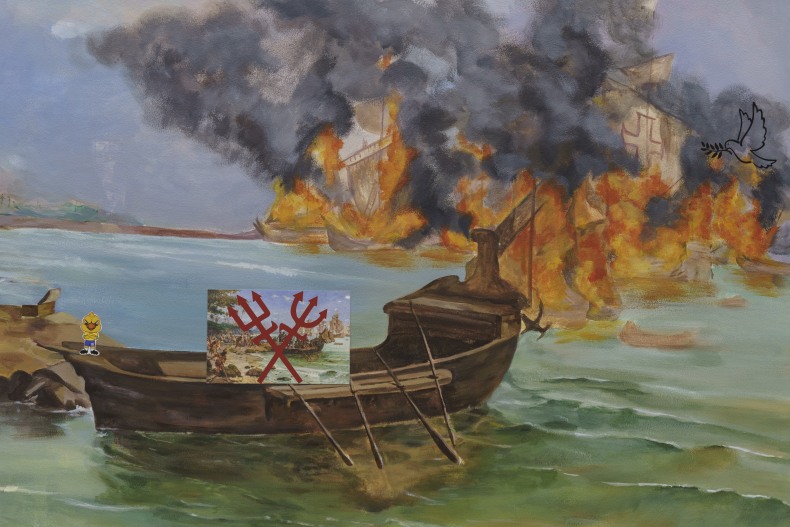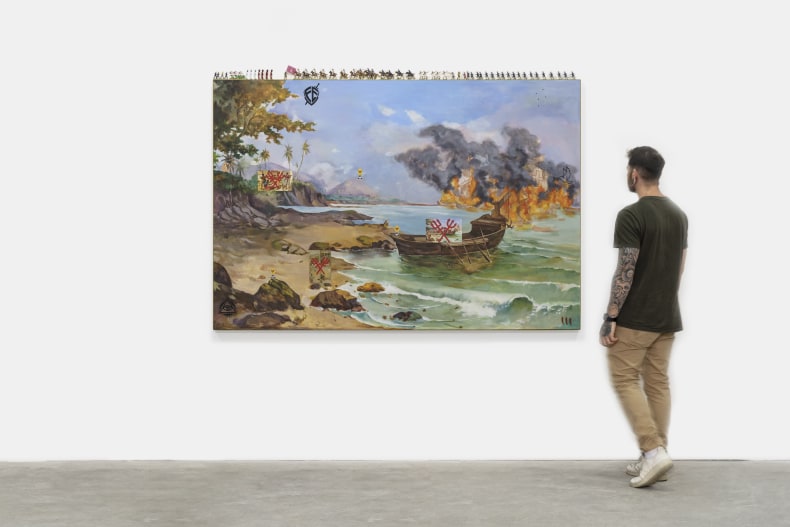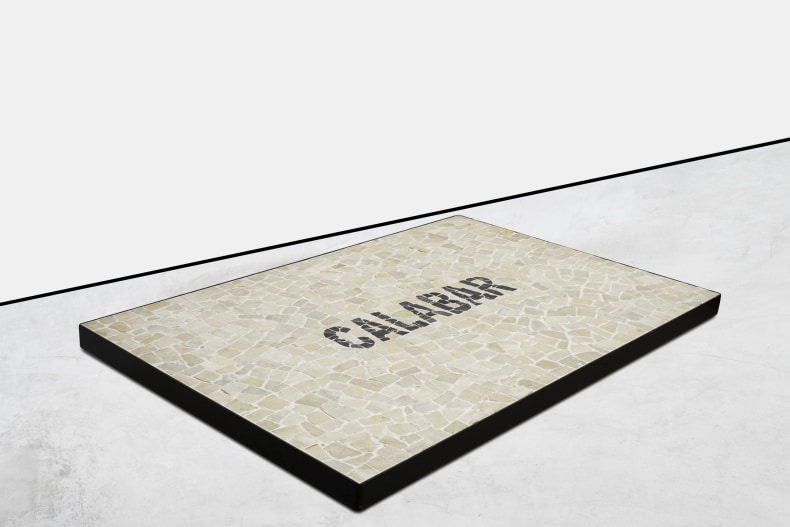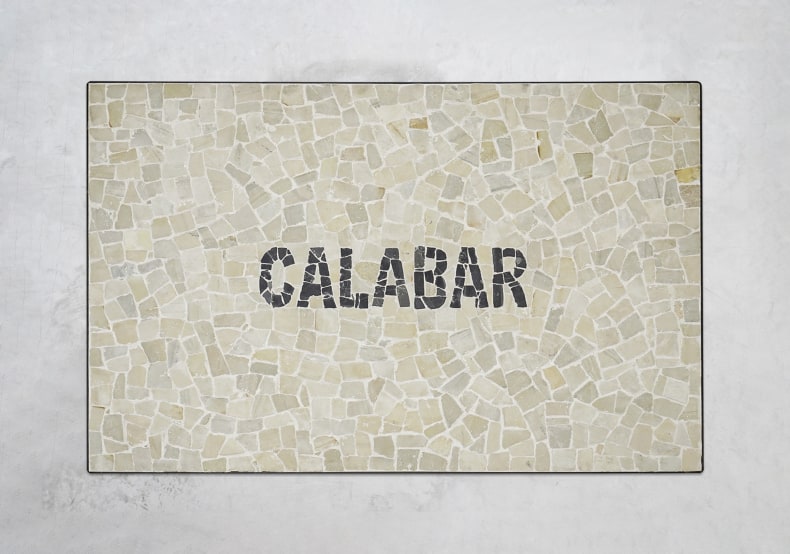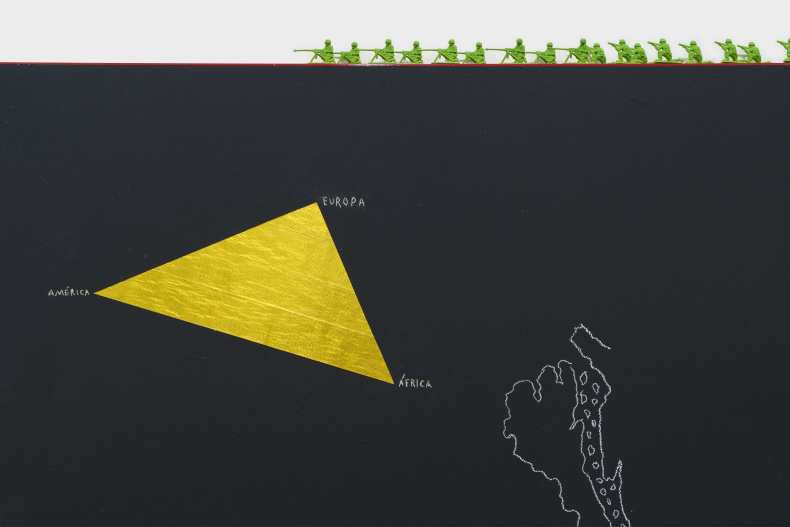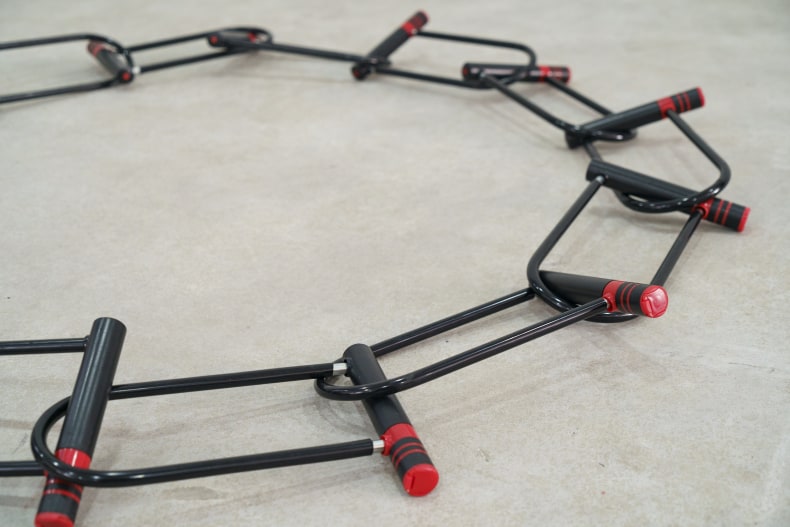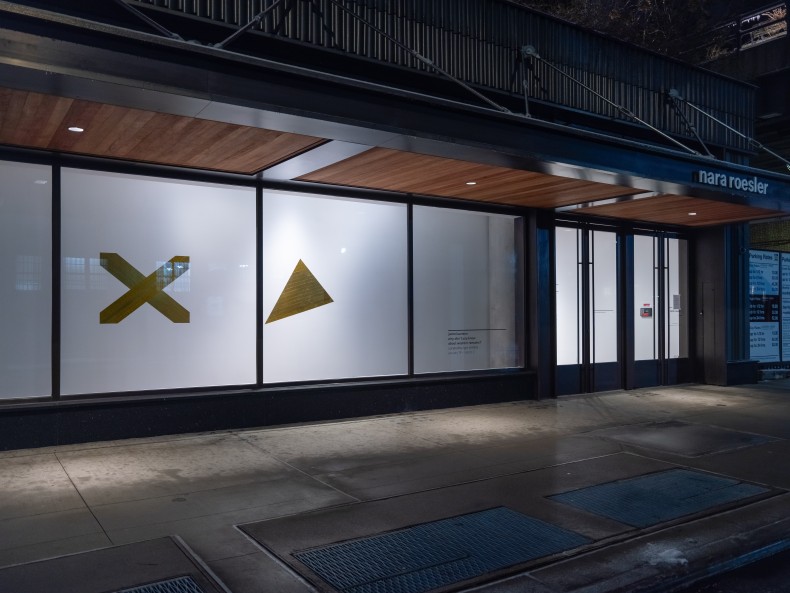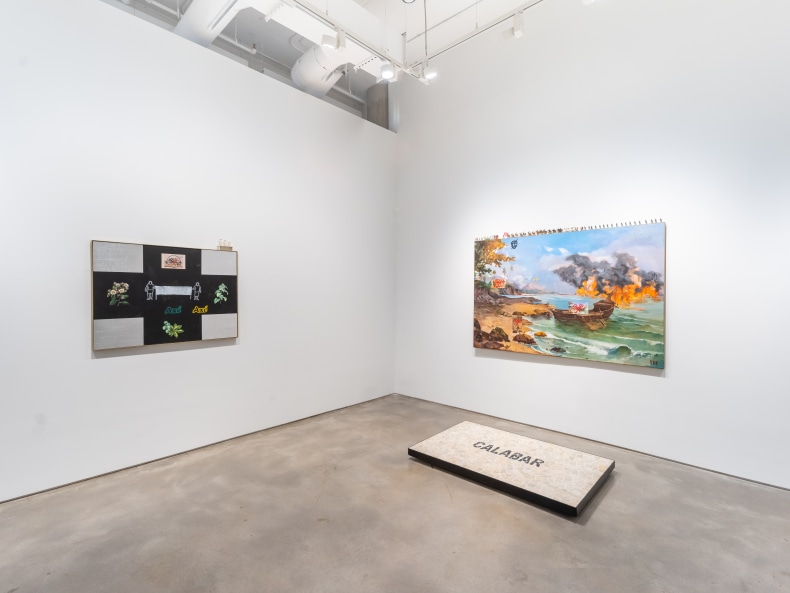Nara Roesler New York is pleased to present Why don't you know about Western remains?, Jaime Lauriano's first solo exhibition in the United States, curated by Igor Simões. The show brings together around ten works, including paintings, sculptures, and a video, which are recent developments in the artist's research and developed mainly over the last year.
With its title taken from the first verse of the song For Lennon e McCartney by Milton Nascimento, the exhibition focuses on works that examine the formation of the imaginary of Brazilian society. From a decolonial perspective, Lauriano addresses current issues, always taking into account the past of Brazilian and Latin American societies, founded on colonial exploitation and slavery, exposing a deeply violent and unequal contemporary reality. In order to poetically understand this historical conjuncture, the artist revisits visual elements that have helped create this situation, ranging from great Brazilian art paintings to widely circulated everyday images, many of which are seemingly "harmless," like toys and stickers, but implicitly carry a huge burden of historical violence.
In his pictorial works, the artist inserts various elements from popular visuality onto the canvas, ranging from colonial images to those associated with Afro-Brazilian religions. Through these works, Jaime Lauriano operates a kind of re-signification, with elements such as the word “Ax锹, or sacred figures like the Preto Velho², acting against colonial violence and bringing spiritual protection.
Also featured are some recent works of a cartographic nature. Maps are a widely used element in the process of invading and scrutinizing subordinate territories. In these works, however, the artist makes these maps using pemba, a chalk used in Afro-Brazilian religious territories. He inserts territories and names associated with historical cartography into his maps, and at the same time, includes objects and visual signs associated with colonialism, racism, and contemporary violence.
Pedro Álvares Cabral's Invasion of Porto Seguro in 1500 is also an offshoot of research that Jaime Lauriano has carried out since 2022. In this series, the artist reinterprets academic paintings produced between the second half of the 19th century and the beginning of the 20th century, which idealize facts from Brazilian history and place colonizers in heroic poses. The work in question is a painting by Oscar Pereira da Silva from 1900, which depicts the arrival of the first Portuguese settlers in what would become known as Brazilian territory today. Jaime empties the scene of people and characters, keeping only the scenery, and he inserts a profusion of stickers, which sometimes allude to colonial violence and sometimes to elements of resistance. Above, along the frame of the canvas, are miniatures of soldiers and popular figures linked to Afro-Brazilian religions, such as Zé Pilintra³, which are arranged in such a way as to simulate combat.
Padrão dos Descobrimentos discusses Portuguese colonization more broadly, revisiting the monument of the same name, located in the city of Lisbon and designed in the 1940s to pay homage to those involved in Portuguese maritime expansion and the construction of the country's colonial empire. Here, however, the imposing landmark is reduced to a cast brass miniature, whose material was extracted from ammunition cartridges collected from conflict areas in Brazil. This military accomplishment, while celebrated in Portugal, was responsible for creating conflicts that still exist today.
The exhibition also includes the artist's first work in cinematographic language, Cantando na Chuva (Singing in the Rain), from 2023. Made in partnership with the Legitimate Defense Collective, this film reinterprets the classic by the same name, starring Gene Kelly. As a starting point, the artist uses an episode of racial violence that took place in Rio de Janeiro in 2018, in which the police murder a black man after mistaking an umbrella he was carrying for a rifle.
In the words of Igor Simões, the exhibition's curator: "This exhibition exists precisely because you don't want to know about the remains that is both the trace and the ballast of the experience of a continent founded on colonization."
¹ Axé: a word in the Yoruba language (an African language originating in the region of Nigeria) that means "energy", "power" or "strength".
² Preto Velho: Entity present in Umbanda (an African religion originating in Brazil) which consists of a spirit that manifests under the archetype of an elderly African. Associated with wisdom, tenderness and patience, they bring love and hope to those they protect.
³ An entity present in Afro-Brazilian religions, considered the patron spirit of bars, gambling places and gutters, sometimes associated with naughtiness.
